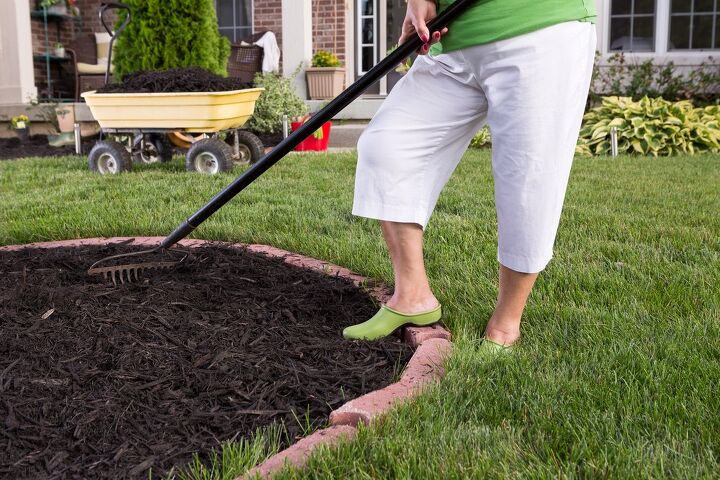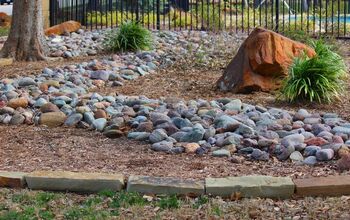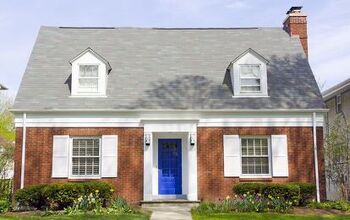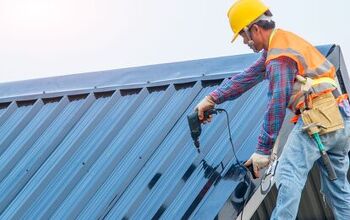Can You Put Mulch Over Rocks?

Mulching is a great way to improve the health and appearance of your garden. Putting mulch over your rocks can be a quick fix for sprucing up your yard, but is it a good idea?
You can put mulch over rocks, as long as you flatten them first and lay landscape fabric in between. Opt for pine bark, wood mulch, or cypress mulch when selecting a type for your backyard. Replace your mulch every 5 years to keep your plants healthy and your garden looking fresh.
Continue reading to learn if it’s possible to lay mulch over rocks and about pitfalls to doing so. Furthermore, this article will touch on how to put mulch over rocks and the most suitable types for this project!
Do You Need Mulch, Soil, Sand, or Rock Delivery?
Get free, zero-commitment quotes from pro contractors near you.

Is It Possible to Put Mulch Over Rocks?
So, you want to lay mulch in your backyard. You’ve read about all the benefits and think it will look good, but is the install process possible without removing existing rocks?
Mulch can be laid directly over garden or landscaping rocks without having to disturb them. Doing so will help the soil retain more moisture, keep the soil cooler in summer to stimulate plant survival rates, and help with agricultural pest control (i.e., weeds).
As long as your rocks are stable and not likely to move when covered with mulch, it is a viable solution. If there are any concerns about stability, you can always use landscape fabric or some other type of barrier to keep the mulch in place.
We’ll get more specific below.
Pitfalls to Putting Mulch Over Rocks
While it is possible to put mulch over rocks without any major consequences, there are a few things to watch out for.
One such pitfall is that the mulch can become matted and compacted over time, which will reduce its ability to function as intended. As the mulch compresses, it will block airflow. Without proper airflow, the soil doesn’t get oxygen which can suffocate plant roots.
Another issue that arises when you put mulch over rocks is that garden or landscaping rocks are often too porous and allow water to drain through them, regardless of mulch coverage. If your ultimate goal is to retain more moisture in the soil by layering mulch over rocks, this could backfire. It may just be better to remove the rocks first.
The final consideration is aesthetics. If you’re using a mulch that doesn’t blend well with the color of your rocks, this may draw attention to the area and detract from the look.
Ultimately, adding mulch will help with the problems addressed above, but it won’t completely remove the disadvantages rocks provide.
In order to completely eliminate these, you have to remove the rocks before laying a layer of mulch.
The Best Types of Mulch to Put Over Rocks
Now that we’ve discussed how to put mulch over rocks and the potential associated risks, let’s get into what types of mulch can be used for this purpose.
The best types of mulch to put over rocks are:
- Pine bark
- Cypress mulch
- Wood mulch
Pine bark is a great option because it acts as an insulator for the soil. It’s a byproduct of the foresting industry that will help retain more moisture in the summer without retaining too much additional heat.
Cypress mulch is a wood and bark combo product. It has a great color and texture to it, but it also can help lower soil temperature in the summer.
It’s an all-around great mulch to use because it doesn’t hold too much heat, which is great if you’re putting mulch over rocks in an area that gets a lot of sunlight during the day.
Wood mulch has a major downside compared to pine or cypress mulches: insects! The upside is that it comes in smaller pieces and a variety of colors, but be sure to lay it away from other wooden structures, or it may attract termites into your home.
Choose wisely when picking the right mulch for your yard!
How to Put Mulch Over Rocks
Note: Before embarking on this project, always double-check with your local extension service. They can ensure that the mulch you plan to use is not only suitable for your climate and growing conditions but also safe to use near or around your rocks.
With all of that considered, let’s go over the installation process!
Follow these steps to put mulch over your landscaping rocks:
- Remove any weeds or overgrowth you can identify.
- Level the rocks- if they are not level, the mulch will not be either. Use a shovel or rake to smooth them out.
- Remove any large rocks from the area that you plan to mulch. This will help reduce the amount of mulch needed to cover the rocks and also make it less likely for the rocks to move around when covered.
- Add a layer of landscape fabric, if desired.
- Add a layer of mulch. If you have a large area to cover, start by spreading the mulch in one corner and work your way out.
Once you complete a project like this, it’s important to ensure that your mulched rocks stay in good shape.
There are a few things to do periodically, including making sure weeds aren’t growing under or around your stones, raking the mulch occasionally to replenish it, and checking for rocks that may be moving.
If you keep up with this simple management plan (which should only take a few minutes each month), your landscape will look good for years to come.
Related Questions
Can you put mulch over grass?
To lay mulch over grass, you must first suppress or smother the grass using newspapers or cardboard. Then, you can lay the mulch over the top!
Is mulch bad for dogs?
Mulch is not bad for dogs, but it’s important to make sure that they don’t eat any. Some types of mulch can cause an upset stomach or other health problems if ingested.Always check with your veterinarian before using mulch if you have any pets that like to chew on sticks in the backyard.
Can mulch go bad?
Yes, mulch can go bad. It should be replaced around every 5 years or so.
Do You Need Mulch, Soil, Sand, or Rock Delivery?
Get free, zero-commitment quotes from pro contractors near you.

In Summary
It’s possible to put mulch over rocks using the techniques and tips detailed above.
Consult your local extension service to ensure that the type of mulch you plan on using is suitable for your climate and specific project!
Related Guide

Emily is a copywriter with over five years of experience in crafting content for the home renovation and remodeling industry. She loves house projects, whether it be painting a room or tweaking small design elements to transform a space. Her favorite aesthetic is french modern because of its clean lines and airy feeling! When not writing, Emily loves to travel and check out architectural details all over the world.
More by Emily Carr



























